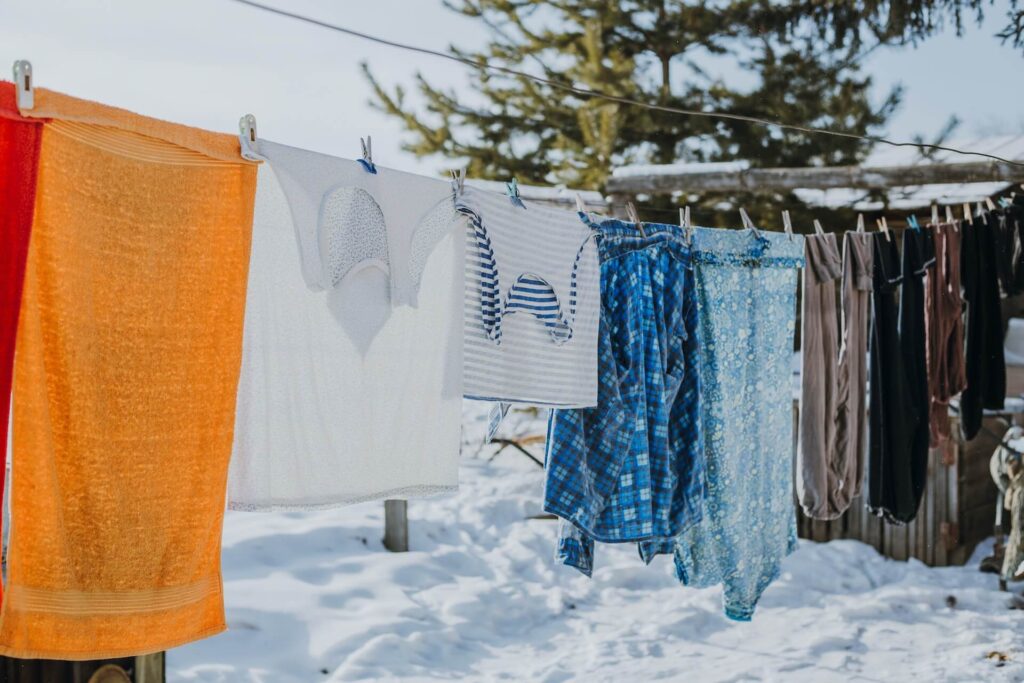Are you looking for ways to save energy at home? If so, you’re in luck! There are many easy ways to reduce your energy consumption and save money on your utility bills.

One of the most important things we can do to save energy is to make our homes more energy-efficient.
There are several things we can do to make our homes more energy-efficient, and many of them are relatively simple and inexpensive.
Table of Contents
Why saving energy is important
Saving energy is important because it helps the environment by reducing pollution and greenhouse gas emissions. It also conserves resources, which means we can use them more efficiently and sustainably.
Additionally, saving energy often saves money, which can be used to reinvest in other areas or reduce debt. Lastly, saving energy helps ensure that we have a reliable and affordable energy supply in the future.
How To Save Energy At Home?
Get an energy audit

Many utility companies will do this for free. This will help you determine where your home is losing energy and how to fix the problem.
An energy audit is an assessment of your home’s energy usage. The audit will identify ways to reduce your energy consumption and lower your energy bills.
Many utility companies offer free or discounted energy audits to their customers. You can also hire a professional energy auditor to assess your home’s energy usage.
The auditor will look at your home’s insulation, windows, and heating and cooling systems. They will also look at your energy bills to see how much energy you use.
The audit will help you understand where your home is losing energy and how you can save energy.
Change your light bulbs to save energy at home
Most people don’t think twice about the type of light bulbs they use in their homes. However, switching to more energy-efficient options, like compact fluorescent lamps (CFLs) or light-emitting diodes (LEDs), can save you a lot of money in the long run.
CFLs and LEDs use less energy than traditional incandescent bulbs, so they’ll lower your electricity bills.
They also last much longer than incandescent, so you won’t have to replace them as often. CFLs last up to 10 times longer and LEDs last up to 25 times longer.
To help you make the switch, your local utility company may offer rebates on energy-efficient bulbs.
So, if you replace your regular light bulbs with CFLs or LEDs can save you a lot of money in the long run.
Turn off lights and electronics when you’re not using them

This seems like a no-brainer, but it’s often overlooked.
Most people are familiar with the idea of turning off lights when they leave a room, but many don’t realize that other electronics in their homes consume electricity even when they’re turned off.
Things like televisions, computers, and video game consoles are all examples of electronics that use standby power. This means that even when they’re turned off, they’re still using a small amount of electricity.
While the amount of electricity used by each electronic may not seem like much, it can add up quickly when you have multiple devices.
Standby power can account for 5-10% of your home’s total electricity usage.
This means that by simply unplugging electronics when you’re not using them, you can save a significant amount of money on your electricity bill.
In addition to saving money, reducing your standby power usage can also help to reduce your home’s carbon footprint.
Standby power is a major contributor to greenhouse gas emissions, so by cutting down on the amount of electricity your home uses, you’re also helping to reduce your impact on the environment.
Adjust your thermostat

There are a few things to consider when adjusting your home’s thermostat a few degrees lower in winter and a few degrees higher in summer.
First, you’ll want to consider your home’s insulation. If your home is well-insulated, you won’t need to adjust the thermostat as much to achieve the desired temperature.
Second, you’ll want to consider your family’s comfort level. If your family is comfortable with a slightly cooler or warmer temperature, then you can adjust the thermostat accordingly.
Finally, you’ll want to consider the cost of energy. Adjusting your thermostat a few degrees lower in winter and a few degrees higher in summer can help you save money on your energy bills.
Consider solar energy to save energy at home and reduce electricity bills
Solar energy has been used for centuries to heat homes and to produce electricity.
However, it has only recently become a viable option for the average homeowner.
There are many benefits to using solar energy at home, including reducing your electricity bills and saving energy.
Solar energy is a renewable resource, which means that it will never run out. It is also cleaner than most other forms of energy, such as coal and oil.
Solar panels convert sunlight into electricity, and this electricity can be used to power your home.
Installing solar panels on your home can be a significant investment, but it will pay off in the long run. Solar panels will last for many years, and the electricity they generate will save you money on your electricity bills.
In addition, solar energy will help to reduce your carbon footprint and help to protect the environment.
Weatherproof your home to save energy at home

This will help you keep the heat in during the winter and the cool air in during the summer.
There are many ways to weatherproof your home, and each has the potential to save energy and reduce electricity bills.
Some of the most common methods of weatherproofing include sealing windows and doors, insulating walls and ceilings, and installing weather-stripping around doors and windows.
Other options include installing storm doors and windows, adding solar screens to windows, and planting trees and shrubs around the perimeter of your home to provide shade and wind protection.
Sealing windows and doors is one of the most effective ways to reduce energy loss in your home. Caulking and weather-stripping are inexpensive and easy to install, and they can make a big difference in reducing drafts and air leaks.
Insulating walls and ceilings will also help to keep your home warmer in the winter and cooler in the summer, and it can be done relatively easily and inexpensively.
Adding storm doors and windows can provide an extra layer of protection against the elements, and solar screens can help to keep your home cooler in the summer by blocking out the sun’s rays.

Planting trees and shrubs around your home can provide shade and wind protection, and they can also help to improve the appearance of your home.
Weatherproofing your home can have a significant impact on reducing energy consumption and saving money on your electricity bills.
By taking some simple steps to seal windows and doors, insulate walls and ceilings, and install weather-stripping, you can make your home more energy-efficient and comfortable, and you can save money on your utility bills.
Use a clothesline

This will save you money on your electric bill and it’s better for the environment.
A clothesline is a great way to save energy at home and reduce your electricity bill. By hanging your clothes out to dry, you can save money on your energy bill and help to reduce your carbon footprint.
Clothes dryers are one of the most energy-intensive appliances in the home, so hanging your clothes out to dry can make a big difference.
Additionally, clothes hung out to dry will last longer and stay in better shape than clothes that are dried in a dryer.
Insulate your home
This will help you keep the heat in during the winter and the cool air in during the summer.
Insulating your home is one of the most effective ways to reduce your energy consumption and save money on your electricity bill.
By keeping your home well-insulated, you can reduce your heating and cooling costs by up to 50%. In addition, insulating your home can also help to reduce noise pollution and improve your home’s overall comfort level.
Insulation materials
There are a variety of different insulation materials available on the market, each with its own unique set of properties that can save energy at home and reduce electricity bills.
The most common insulation materials are fibreglass, cellulose, and spray foam.
Each type of insulation has its own set of benefits and drawbacks, so it is important to choose the right type of insulation for your home.
A good insulation material will have a high R-value, which means it will resist heat flow. This is important because it will keep your home warm in the winter and cool in the summer.
Fibreglass
Fibreglass is the most common type of insulation and is typically the most affordable option. Fibreglass insulation is made from recycled glass and is available in a variety of R-values.
Fibreglass insulation is easy to install and can be used in a variety of applications, such as walls, ceilings, and attics.
However, fibreglass insulation does not have a very high R-value and can settle over time, which can reduce its effectiveness.
Cellulose
Cellulose insulation is made from recycled paper products and is treated with fire retardants and insecticides.
It has a higher R-value than fibreglass insulation and does not settle over time.
Cellulose insulation is also easier to install than fibreglass insulation and is available in a variety of R-values. However, cellulose insulation can be more expensive than fibreglass insulation and is not as effective in high-moisture areas.
Spray foam
Spray foam insulation is made from a variety of materials, including polyurethane, cellulose, and fibreglass.
Spray foam insulation is available in a variety of R-values and can be used in a variety of applications, such as walls, ceilings, attics, and crawl spaces.
Spray foam insulation is easy to install and does not settle over time. However, spray foam insulation can be more expensive than other types of insulation and is not as effective in high-moisture areas.
Closing doors and curtains

One way to save energy at home is to shut doors and close curtains.
This will help to reduce the amount of heat that escapes from the home, and will also help to keep the home cooler in the summer.
Closing doors and curtains will also help to reduce the amount of noise that comes into the home, which can help to create a more peaceful environment.
Shopping consciously to save energy at home
When purchasing a new appliance, looking at the Energy Star label and the effect it will have on saving energy at home and reducing electricity bill costs is a great way to make an informed decision.
An appliance that has earned the Energy Star label has been certified by the EPA to meet strict energy-efficiency guidelines.
These guidelines cover a wide range of products, including major appliances, office equipment, lighting, and home electronics.
Energy-efficient products typically use less energy than standard models, which can save you money on your energy bills and help reduce greenhouse gas emissions.
So, when shopping for a new appliance, look for the Energy Star label to be sure you are choosing a product that will save you money on your energy bills and help protect the environment.
Also Read: Trick Used By Many Big Stores To Trick You Into Buying More
Be conscious of your energy consumption
The more aware you are of how much energy you’re using, the more likely you are to conserve it.
If you are conscious of your energy consumption, you will be able to save energy at home and reduce your electricity bill.
When you are aware of how much energy you are using, you can make changes to your habits to reduce your consumption. This will help you save money on your energy bill and also help to conserve energy.
Conclusion
You may not realize it, but making small changes around your home can have a big impact on your energy consumption and your electricity bill. Taking some time to save energy can not only help the environment, but it can also help you save money.